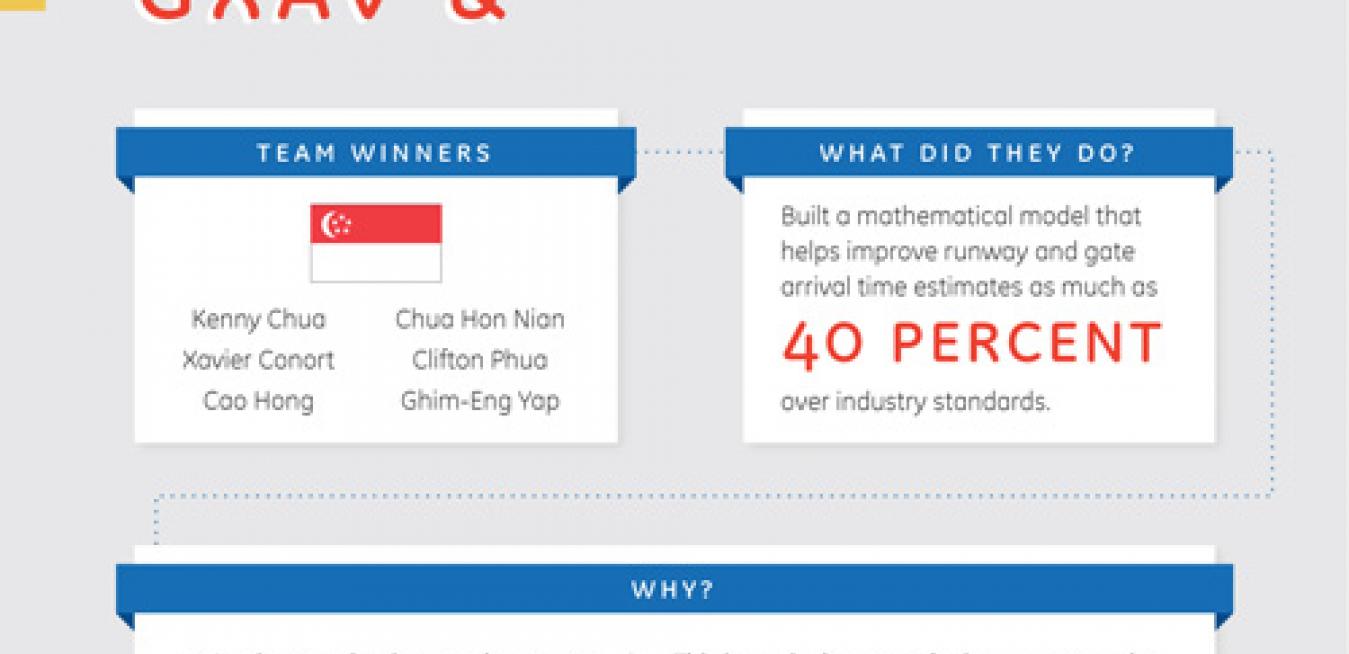Why do some flights arrive early while others touch down hours late? It’s a riddle that consumes frequent flyers and airlines alike. It can result in headaches and missed connections, not to mention the millions in losses each year when a plane is not in the right place at the right time. GE and partners Alaska Airlines and Kaggle decided to find out, and opened the question to hundreds of data wizards from around the world.
This morning, they announced the results of the Flight Quest challenge to use data and software to reduce air travel delays. A similar challenge called Hospital Quest, where GE and Kaggle partnered with the Ochsner Health System, focused on improving healthcare.
Developers and data scientists from 58 countries submitted more than 3,000 ideas competing for a total prize pool of $600,000 in cash awards.
The economic stakes are high. A recent study of congestion at New York City airports found that “current and projected levels of congestion in New York contribute to expensive delays, loss of productivity, wasted fuel, and pollution of the environment to a degree that should not be tolerated.” Boeing estimates the number of airplanes in service will double between 2011 and 2031, from 20,000 to 40,000.
The top prize winners of the Flight Quest challenge come from Team Gxav &* based in Singapore. Xavier Conort, Cao Hong, Clifton Phua, Ghim-Eng Yap and Kenny Chua built a mathematical model that helps improve runway and gate arrival time estimates by as much as 40 percent over industry standards.
In some cases, the winners had scarcely ever set foot on a plane. Second-place finisher Pawel Jankiewicz noted that all of the data about wind speed, air speed and other variables are just numbers that feed into algorithms. “It starts to talk to me,” Jankiewicz said of the data. “I must know what it means.”
Team Gxav &*’s improved algorithms have the potential to save travelers more than five minutes at the gate and could translate to significant savings for airlines. A one-minute reduction per departure could save an average-sized airline 1,700 hours per year, the equivalent of reducing crew costs by $1.2 million and fuel costs by $5 million.
“Improved accuracy can help us avoid gate congestion, and minimize delays for passengers and crews,” says Gary Beck, vice president for flight operations at Alaska Airlines. “It means less wait time and better efficiency for ground crews … [and] more efficient use of our aircraft, which saves fuel and helps us offer low fares.”
The Hospital Quest winner was an app called Aidin, helping patients find the best post-acute care available. It was designed by New Yorkers Mike Galbo, Russ Graney, and Janan Rajeevikaran. Their software taps the discharge management process and automatically generates lists of care providers after patients leave the hospital. This reduces administrative tasks for social workers and allows them to devote more time to patients.
The healthcare system wastes many billions every year due to inefficiencies. “At Ochsner, innovating the way we deliver patient care to maintain the highest quality and improve the patient experience is critical,” says Warner Thomas, president and CEO of Ochsner Health System. “The Hospital Quest was an opportunity to identify new ways to empower patients, eliminate wait times and increase communication– before, during and after a patient’s stay.” Thomas said that as a Quest judge, he was “incredibly impressed with the insight, creativity and realism behind the submissions.”
The complete list of winners for both Quests is available online.





